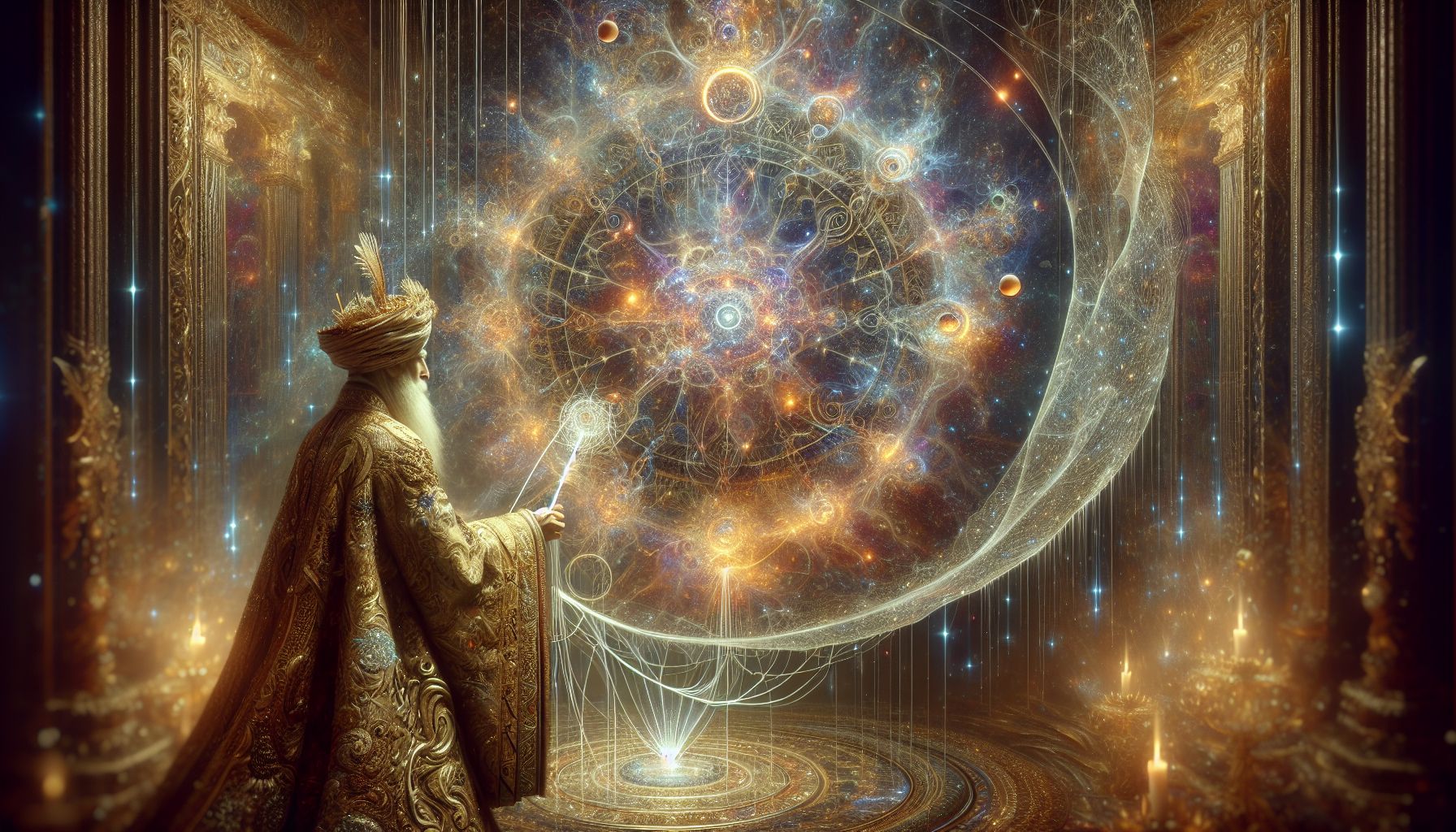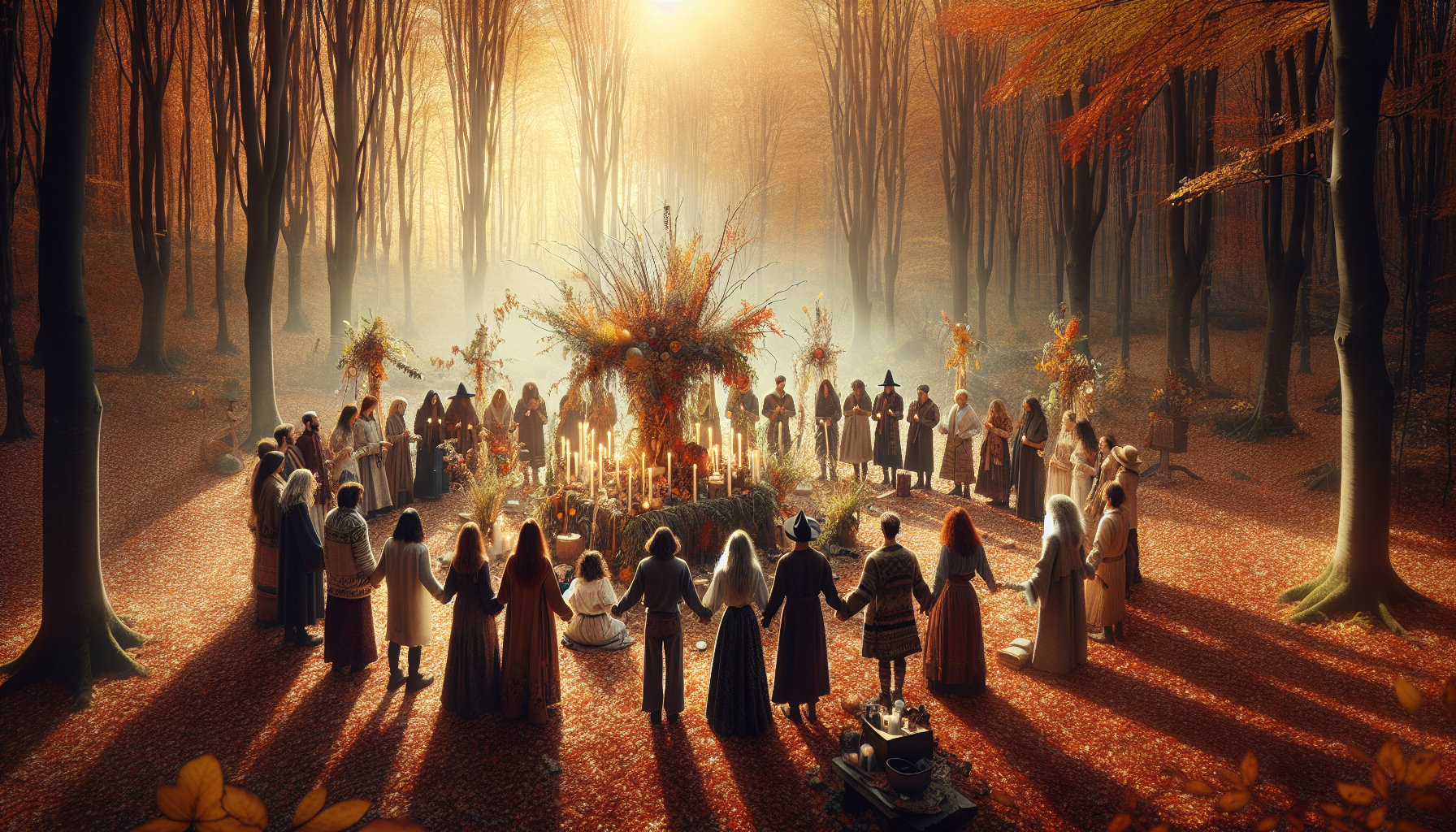In a world increasingly governed by technology and the tangible, there lies a mesmerizing domain that continues to captivate the human imagination—the mystical and the cosmic. Our fascination with the stars and the unknown is nothing new; it is woven into the very fabric of our history and consciousness. The concept of cosmic weaving through ritual thread serves as a bridge between the earthly and the ethereal, inviting us to explore the vast tapestry of the universe while connecting with ancient traditions. This article delves into the intricate dance between the cosmos and rituals, uncovering how these practices have been used throughout time to create meaning, foster connection, and unlock the mysteries of existence.
The notion of weaving is deeply symbolic, representing the interconnection of all things in the universe. It suggests that every thread, no matter how small, has a purpose and place within the greater design. In many cultures, weaving is more than a craft; it is a sacred act, a ritual that mirrors the creation of the cosmos itself. The practice of weaving threads into patterns can be seen as an earthly echo of the cosmic order, a tangible reflection of the divine artistry that shapes the universe. Through rituals, these threads become pathways to understanding, allowing us to access deeper realms of consciousness and spiritual insight.
As we unravel this mystical tapestry, we will explore several key themes: the historical significance of weaving in various cultures, the role of rituals in connecting with the cosmos, and the ways in which modern practices continue to draw inspiration from these ancient traditions. From the intricate patterns of the Navajo weavers to the cosmic symbolism found in Hindu rituals, we will examine how different societies have used the act of weaving to communicate with the universe. Additionally, we will delve into the psychological and spiritual benefits of engaging with these practices, considering how they can offer solace, clarity, and a sense of purpose in our increasingly chaotic world.
Ultimately, “Unveiling the Mystical Tapestry: Cosmic Weaving Through Ritual Thread” is an invitation to look beyond the mundane and embrace the enchantment that lies in the interplay between the cosmic and the ritualistic. It is a journey into a realm where the threads of tradition and innovation intertwine, revealing a universe rich with symbolism and wonder. Whether you are a seeker of spiritual wisdom or simply curious about the mysteries of existence, this exploration promises to enrich your understanding and inspire a deeper appreciation for the cosmic patterns that surround us. So, let us embark on this odyssey, guided by the luminous threads of history and imagination, as we weave our way through the stars and the stories they tell. 🌌✨
Understanding the Concept of Cosmic Weaving
The ancient art of weaving has long been a metaphor for the interconnectedness of the universe. In many cultures, the act of weaving is more than just a craft; it represents the complex and intricate design of cosmic forces at play. This concept of cosmic weaving posits that the universe is a vast tapestry, woven with threads that represent the myriad energies and forces that shape our reality. By understanding these threads, we can gain insight into the mysteries of existence and our place within this grand design.
Historically, various cultures have interpreted the notion of cosmic weaving through their mythologies and spiritual practices. In Greek mythology, the Moirai, or Fates, were often depicted as weavers who determined the destiny of individuals by spinning and cutting threads. Similarly, in Hindu philosophy, the concept of ‘Maya’ refers to the illusory nature of the world, woven together by divine forces. These stories and beliefs highlight a universal acknowledgment of an unseen pattern governing life, suggesting that there is more to the universe than what meets the eye.
In the modern context, cosmic weaving can be seen as a metaphor for the interconnectedness of all things, resonating with contemporary understandings of physics and cosmology. The notion of a cosmic web, as proposed in the field of astrophysics, echoes this idea. This web is a vast network of filaments composed of dark matter and gas, connecting galaxies across the universe. Just as a weaver meticulously intertwines threads to create a fabric, the universe is similarly interconnected through invisible forces. To delve deeper into this fascinating concept, watch the video below: The Cosmic Web: A Journey to the Heart of the Universe – PBS Space Time.
The Role of Rituals in Cosmic Weaving
Rituals have long been a conduit for humans to connect with the mystical aspects of cosmic weaving. Through structured ceremonies and practices, individuals and communities attempt to tap into the energy of the universe, aligning themselves with the cosmic tapestry. These rituals often involve symbolic acts such as the creation of mandalas, knot tying, or the spinning of yarn, each representing a facet of the cosmic weave.
For instance, in many Indigenous cultures, the act of weaving is deeply spiritual, imbued with rituals that honor the earth and its energies. The Navajo, for example, view weaving as a sacred art passed down by Spider Woman, a deity associated with creation and storytelling. Each rug or blanket is crafted with intention, symbolizing stories and prayers interwoven into the fabric. These practices not only preserve cultural heritage but also serve as a reminder of the interconnectedness of life.
Similarly, in the East, the Japanese art of Kumihimo, or braided cord making, involves intricate patterns and designs. Historically used by samurai in armor and attire, these cords are now appreciated for their beauty and complexity. The practice of Kumihimo is a meditative process, reflecting the weaver’s connection to the cosmic energy. It symbolizes the intricate patterns of life, with each strand representing different paths and choices. Discover more about this fascinating ritual in the video: The Art of Kumihimo – NHK World-Japan.
Exploring the Symbolism of Threads and Fabrics
Threads and fabrics are potent symbols within the concept of cosmic weaving, representing the connection between the material and spiritual worlds. They are often used as metaphors for life’s journey, depicting how individual experiences and paths are interwoven into the broader tapestry of existence. This symbolism is evident in various cultural narratives and spiritual beliefs, each offering unique interpretations of how these threads influence our lives.
In the context of cosmic weaving, threads are seen as carriers of energy and intention. They are the means by which the cosmic tapestry is constructed, with each thread holding significance and purpose. For example, in the practice of Tibetan sand mandalas, colored sand is used to create intricate designs that represent the universe. Each grain of sand symbolizes a moment, a thought, or an intention, woven together to form a greater whole. Once completed, the mandala is destroyed, symbolizing the impermanence of life and the constant flow of cosmic energy.
The use of threads also extends to the symbolic representation of life’s choices and paths. In the myth of the Three Fates, the length and cut of a thread determine an individual’s destiny. This metaphor serves as a reminder that while we may not control the weaving of the cosmic tapestry, our actions and choices contribute to its design. To better understand the symbolism of threads, consider watching the video below: Threads of Destiny – Mythology & Fiction Explained.
Comparative Analysis of Weaving Practices Across Cultures
Weaving practices vary significantly across cultures, each bringing a unique perspective to the concept of cosmic weaving. By examining these differences, we can gain a deeper understanding of how various traditions interpret the interconnectedness of the universe. The table below provides a comparative analysis of some notable weaving practices:
| Cultural Tradition | Weaving Practice | Symbolism |
|---|---|---|
| Navajo | Rug and blanket weaving | Interconnection with nature, storytelling |
| Japanese | Kumihimo | Complexity of life, meditation |
| Greek | Mythological weaving by the Moirai | Destiny and fate |
| Tibetan | Sand mandalas | Impermanence, universe representation |
By analyzing these practices, we see how each culture embeds its worldview and philosophical beliefs into the act of weaving. Whether it is the Navajo’s integration of nature into their designs or the Greeks’ mythological representation of fate, these practices serve as a testament to the universal human desire to understand and connect with the cosmic forces that shape our existence.
Understanding the cultural context of these weaving practices allows us to appreciate the diversity and richness of human expression. It highlights the shared belief in a larger cosmic design, urging us to look beyond the material world and recognize the deeper connections that bind us all. For a visual exploration of these diverse weaving practices, check out the video: Global Weaving Traditions – National Geographic.
Practical Applications of Cosmic Weaving in Modern Life
The concept of cosmic weaving is not merely a philosophical or spiritual abstraction; it has practical applications in modern life that can enhance our understanding of ourselves and our surroundings. By embracing the principles of interconnectedness and intentionality, individuals can cultivate a greater sense of purpose and alignment with the universe. This section explores how cosmic weaving can be applied to personal development, mindfulness, and creative expression.
One way to integrate the principles of cosmic weaving into daily life is through mindfulness practices that emphasize awareness and presence. By viewing life as a tapestry, individuals can become more attuned to the threads of their thoughts, emotions, and actions, understanding how each contributes to their overall experience. Meditation, journaling, and yoga are practices that encourage reflection and introspection, helping individuals to weave their own lives with intention and purpose.
In the realm of creative expression, the metaphor of cosmic weaving can inspire artists, writers, and musicians to explore themes of connection and harmony. The act of creating can be seen as a microcosm of the cosmic tapestry, with each stroke of a brush or note of a melody contributing to a larger narrative. Artists can draw inspiration from the rich symbolism of threads and weaving, using their medium to explore the mysteries of existence and the beauty of interconnectedness.
Furthermore, understanding cosmic weaving can enhance our relationships with others and the environment. By recognizing the interconnectedness of all things, individuals may develop a greater sense of empathy and compassion, leading to more harmonious interactions and a deeper commitment to sustainability. Embracing these principles can foster a sense of community and shared responsibility, encouraging us to work together to preserve the delicate balance of the cosmic tapestry.
For those interested in exploring the practical applications of cosmic weaving further, watch the video: Living with Intention: The Art of Weaving Your Life – TEDx Talks.
- Embrace mindfulness to become aware of the threads in your life.
- Use creative expression as a means to explore cosmic themes.
- Foster empathy and compassion through the understanding of interconnectedness.
Through these practices, cosmic weaving can serve as a powerful tool for personal and collective growth, guiding us toward a deeper understanding of the universe and our place within it.

Conclusion
**Conclusion: Unveiling the Mystical Tapestry**
As we draw the curtains on our exploration of the cosmic weaving through ritual threads, it is essential to revisit the significant elements that have been woven together throughout this intricate journey. The fabric of our understanding has been expanded, enriched by the threads of tradition, spirituality, and cosmic interconnectedness. From the ancient practices that have shaped civilizations to the modern interpretations that continue to inspire awe, the tapestry we have uncovered is both profound and enlightening.
Our exploration began with an in-depth examination of the historical roots of ritual weaving, tracing its origins back to ancient cultures where the loom was not merely a tool for creating cloth but a sacred instrument for connecting with the cosmos. These early practices reveal the universal human desire to find meaning and order in the universe, as communities sought to embody celestial patterns within their earthly lives. The narrative of the weaver as both artist and spiritual guide illuminates how these traditions have persisted and evolved over millennia.
A pivotal aspect of our discussion was the symbolic significance of weaving across different cultures. We discovered that threads are more than just physical fibers; they represent the connections between individuals, communities, and the universe. The act of weaving itself becomes a metaphor for the intricate interplay of forces that shape our existence. From the Norse mythology of the Norns weaving the destinies of gods and men to the intricate mandalas of Buddhist traditions, the recurring theme is the intricate balance between fate and free will, chaos and order.
Moreover, the article delved into the transformative power of ritual weaving in contemporary contexts. In an age where technology often isolates us, these age-old practices offer a path back to community and shared purpose. Weaving circles, textile arts, and other collaborative projects demonstrate the potential for healing and empowerment when individuals come together to create something greater than themselves. The resurgence of interest in these practices signifies a broader cultural yearning for authenticity, connection, and a return to slower, more intentional modes of living.
The spiritual dimension of cosmic weaving cannot be overstated. Throughout our exploration, it became clear that these practices are not merely historical artifacts but living traditions that continue to offer spiritual nourishment. The meditative quality of weaving rituals encourages mindfulness, fostering a deeper awareness of the self and one’s place in the universe. By engaging in these practices, individuals find solace and inspiration, drawing upon ancient wisdom to navigate the complexities of modern life.
As we conclude this exploration, it is vital to recognize the enduring relevance of cosmic weaving in today’s world. In a society often characterized by fragmentation and disconnection, these ancient practices remind us of our shared humanity and the invisible threads that bind us. They invite us to pause, reflect, and engage with the world in a more meaningful way. The tapestry we have unveiled is a testament to the resilience of the human spirit and our capacity to find beauty and purpose in the most fundamental aspects of existence.
We encourage you, dear reader, to continue this journey of discovery. Whether through participating in a local weaving circle, exploring the textile traditions of different cultures, or simply reflecting on the symbolic threads in your own life, there are myriad ways to engage with the themes we have explored. By doing so, you contribute to the ongoing tapestry of human experience, adding your unique thread to the cosmic design.
In the spirit of sharing and community, we invite you to comment on your experiences and insights regarding cosmic weaving. Have you participated in any rituals or practices that resonated with you? How do you perceive the relationship between creativity and spirituality in your life? Your thoughts and stories enrich our collective understanding and inspire others to embark on their own journeys.
Lastly, if this exploration has sparked a sense of wonder or curiosity, we encourage you to share this article with friends and family. In spreading the word, you help cultivate a greater appreciation for the rich tapestry of cultural and spiritual practices that shape our world. Let’s continue to weave connections, celebrate diversity, and honor the mystical threads that unite us all. 🌟
For further reading and to explore more about the topics discussed, consider visiting resources like the Smithsonian Center for Folklife and Cultural Heritage link, and the Textile Museum link, which offer extensive insights into the cultural significance and history of textiles and weaving.
Thank you for joining us on this enlightening journey. May the threads of your own life weave a tapestry of beauty, meaning, and connection. 🧶✨
Toni Santos is a visual storyteller and symbolic naturalist whose creations explore the hidden ecologies and forgotten bonds between humans and nature, as whispered through ancient lore. Through an intuitive and myth-sensitive lens, Toni reveals the sacred choreography between flora, fauna, and human spirit — a world where trees once spoke, rivers remembered, and every herb carried a secret name.
His journey is rooted in the esoteric — in the rituals of forest-dwellers, the botanical codes of shamans, and the unspoken pacts that shaped how ancient peoples lived in deep, reciprocal harmony with the natural world. From sacred groves to serpent-guarded springs, each of Toni’s works reflects a symbolic relationship long obscured by modern forgetfulness.
With a background in visual design and ancestral aesthetics, Toni merges storytelling with sacred ecology. His pieces don’t simply illustrate — they channel. Drawing from myth, mysticism, and lost herbal traditions, he crafts visuals that resonate with the old wisdom: that nature is not background, but kin.
As the creative spirit behind Vizovex, Toni shares collections, visual studies, and articles that illuminate the occulted connections between human life and the wild world. His work calls on us to remember — not just with the mind, but with the senses and the soul — the profound dialogues our ancestors once had with earth, plant, and animal.
His work is a tribute to:
The mythic language of trees, stones, and roots
Forgotten pacts between healers and the wilderness
The sacred knowledge carried in nature’s unseen patterns
Whether you’re a seeker of ancient plant-lore, a mystic attuned to seasonal cycles, or simply someone who hears the forest speak, Toni welcomes you to wander a space where symbolism, nature, and spirit entwine — one myth, one leaf, one vision at a time.





